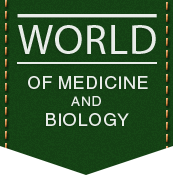| About the author: |
O.G. Shadrin, T.L. Marushko, G.A. Haiduchyk, M.G. Horianska |
| Heading |
CLINICAL MEDICINE |
| Type of article |
Scentific article |
| Annotation |
The state of iron metabolism in infants with food protein-induced enterocolitis syndrome was determined and the efficacy and safety of ferrous bisglycinate chelate for the correction of iron deficiency anemia in this group of children were studied. 40 children aged 6 months to 3 years with a chronic food protein-induced enterocolitis syndrome were examined. Signs of iron deficiency anemia were found in 80% of children. Administration of ferrous bisglycinate chelate at a dose of 0.5 mg of elemental iron/kg/day for 1 month contributed to the normalization of red blood cells and iron metabolism in the organism, which testified to the high bioavailability and effectiveness of this form of ferrous iron in chronic inflammatory processes in the intestine. |
| Tags |
infants, food protein-induced enterocolitis syndrome, iron deficiency anemia, ferrous bisglycinate chelate |
| Bibliography |
- Abdurahmanov DT. Zhelezodefitsitnaya anemiya pri zabolevaniyakh zheludochno–kishechnogo trakta. Farmateka. 2012;13:9–14. [in Russian]
- Anushenko AO, Potapov AS, Tsimbalova EG, Gordeeva OB. Anemiya pri vospalitelnykh zabolevaniyakh kishechnika u detey. Voprosy sovremennoy pediatrii. 2016; 15(2):128–140. [in Russian]
- Gromova OA, Torshin IYu, Hadzhidis AK. Analiz molekulyarnykh mekhanizmov vozdeystviya zheleza (II), medi, margantsa v patogeneze zhelezodefitsitnoy anemii. Klinicheskaya farmakologiya i farmaekonomika. 2010; 1:1–9. [in Russian]
- Kerimkulova NV. Sistematicheskiy analiz molekulyarno–fiziologicheskikh effektov sinergichnogo vozdeystviya zheleza, margantsa i medi. Reproduktivnaya endokrinologiya. 2013; 12(4):101–8. [in Russian]
- Nakaz MOZ Ukrayini vid 02.11.2015 r. #709 “Pro zatverdzhennya ta vprovadzhennya medyko–tekhnolohichnykh dokumentiv zi standartyzatsiyi medychnoyi dopomohy pry zalizodefstsitniy anemiyi” https://ips.ligazakon.net/document/moz25195?an [in Ukrainian]
- Stuklov NI, Kunina MYu, Semenova EN. Effektivnost i perenosimost preparatov zheleza. Chto vazhnee? Sushchestvuet li optimalnoe reshenie? Poliklinika. 2014; 2:48–54. [in Russian]
- Bagna R, Spada E, Mazzone R, Saracco P, Boetti T, Cester EA, et al. Efficacy of Supplementation with Iron Sulfate Compared to Iron Bisglycinate Chelate in Preterm Infants. Current Pediatric Reviews. 2018; 14(2):123–9.
- Burisch J, Munkholm P. The epidemiology of inflammatory bowel disease. Scand. J. Gastroenterol. 2015;50(8):942–951.
- Fernandes A, Bacalhau S, Cabral J. Pediatric inflammatory bowel disease: is it still increasing? Acta Med. Port. 2011;24(Suppl.2):333–8.
- Liao Zh, Guan WT, Chen F, Hou DX, Wang ChX, Qiao HZ, et al. Ferrous Bisglycinate increased iron transportation through DMT1 and PEPT1 in pig intestinal epithelias cells compared with ferrous sulphate. J. Anim. And Feed Sciences. 2014;23:153–9.
- Mazza GA, Marrazzo S, Gangemi P, Battaglia E, Giancotti L, Miniero R. Oral Iron Absorption Test with Ferrous Bisglycinate Chelate in children with celiac disease: preliminary results. Minerva Pediatr. 2019 Apr;71(2):139–143.
- Opinion of the Scientific Panel on food additives, flavourings, processing aids and materials in contact with food (AFC) related to Ferrous bisglycinate as a source of iron for use in the manufacturing of foods ad in food supplements. European Food Safety Authority (EFSA). https://www.efsa.europa.eu/en/efsajournal/pub/299.
- Weiss G, Gasche C. Pathogenesis and treatment of anemia in inflammatory bowel disease. Haematologica. 2010;95(2):175–8.
|
| Publication of the article |
«World of Medicine and Biology» №4(74), 2020 year, 159-163 pages, index UDK 616.348–002–053.37:616.155.194–07–08 |
| DOI |
10.26724/2079-8334-2020-4-74-159-163 |
